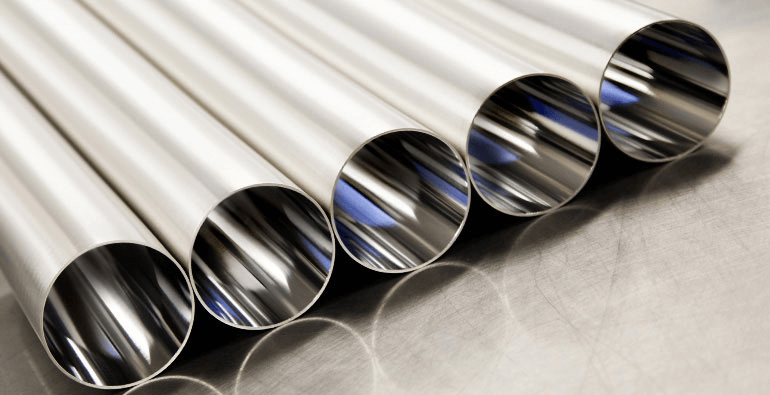
Stainless steel has been among the most valuable and common su bstances since its manufacturing over ten decades ago and is now crucial for various sectors. Stainless steel is an iron composite that contains at least ten and a half percent chromium. Chromium blocks corrosion by developing a thin oxide film on a steel sheet. Increasing the level of chromium offers higher corrosion resistance. Stainless steel also consists of varying quantities of silicon, carbon, and manganese. Manufacturers also widely utilize elements like molybdenum and nickel to enhance the resistance and formability to corrosion.
A Brief Overview Of Thin Wall tubes
Stainless steel pipeline is a type of broadly utilized substance in several industries. For instance, they utilize huge diameter stainless steel seamless pipe. Manufacturers can employ the capillary stainless steel pipeline in the precision instrument production sector. They can use the thick-wall welded stainless steel pipeline as a heat and boiler exchanger tube.
A schedule number describes the wall thicknesses of welded stainless steel and carbon steel pipeline. The wall thickness of a schedule differs according to the size of the pipeline and is provided in tables in the relevant specifications. People broadly utilize thin wall tubes in their everyday lives. As indicated by its name, a thin wall stainless steel pipeline features a thin wall. It refers to the proportion of wall thickness’s ratio to the stainless -steel pipeline’s outer diameter, which is less than six percent.
The thin-wall stainless steel tube utilization has increased since the later part of the twentieth century. In recent times, thin-wall stainless steel tube has become the best commodity for drinking water supply and construction. With the rapid rise in the demand for construction and drinking water supply pipes, the prospects of thin-wall stainless steel tube are very optimistic. To market the thin-wall stainless steel pipeline, the welded stainless steel pipeline makers are making all efforts to cut down the wall thickness and manufacturing costs of pipes.
Benefits Of Using Thin-Wall Stainless Steel Tube
Sustainability
Firstly, the thin-wall stainless steel tube is very recyclable. That is to state, the stainless-steel tube would not be rubbish which is tough to deal with. In this manner, this stainless-steel tube is sustainable and environmentally friendly. People can recycle thin-wall stainless steel pipe, but they need an appropriate machine and facility. The recycling procedure starts by crushing these thin stainless- steel pipelines into tiny pieces. Manufacturers then melt these pieces and utilize them to form new pipelines. Stainless steel pipeline is sturdy, and people can recycle it several times, making it an excellent choice for houses and businesses interested in cutting down their carbon footprint.
Lower costs
Secondly, the thin-wall stainless steel pipes can cut down costs. As stainless-steel pipelines often pose good corrosion resistance, their users do not need to replace the pipelines from time to time.
Cut Down Heat Loss
Thirdly, thin wall stainless steel pipes can cut down heat loss. The thermal quality of welded stainless-steel pipelines is two dozen times of pipelines composed of copper substances.
Different Types Of Thin Wall Stainless Steel Tubes
Hypodermic
Hypodermic stainless -steel tubes are present in a range of industrial and healthcare applications. As its name suggests, this particular kind of tube is known for being easily cleaned. Several hypodermic needles are composed of grade three hundred and four stainless steel tubes, which permits thin wall tubing that manufacturers can deburr and bevel to develop a good-quality finish. Manufacturers use blunt needles to pump balls, rafts, tires, and the rest of inflatable machines, which are also composed of hypodermic stainless -steel tubing. They determine the size of these steel tubes by the outside diameter’s guage and the tube’s inside diameter, ranging from three guage to thirty-three gauges.
Square/Metric/Fractional
People measure square, metric and fractional stainless- steel tubes by their wall thickness and original diameter. Fractional tubing usually comprises of three hundred and sixteen or three hundred and four-grade stainless steel substance for applications that need corrosion resistance and good strength. People utilize metric stainless -steel tubing for high-pressure pneumatic and hydraulic applications.
Businesses utilize stainless steel square tubing in different commercial and domestic applications due to its extra mechanical qualities. They value this tubing for its architectural appeal and strength and can tolerate extreme atmospheric conditions.
Applications Of Three Hundred And Four Thin Wall Stainless Steel Tube
1 Food processors utilize three hundred and four thin wall stainless steel pipes in different fields, particularly food processing because they are not susceptible to acid corrosion present in common foods. Thus, this steel suits commodities like refrigerators, food shop machinery, dishwashers and sinks.
2 Brewing industry utilizes three hundred and four stainless steel tubes in piping, chemical and heat exchangers. Manufacturers can utilize it as a manufacturing substance in areas where high-temperature vapors or gases are stored like pressure vessels.
3 Manufacturers also utilize three hundred and four stainless steel tubes on normal corrosive carbon steel structures.

